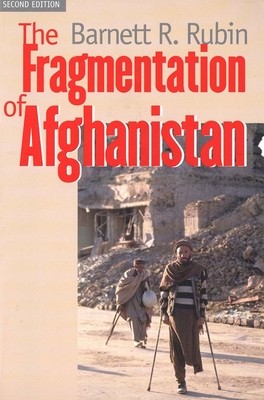
- We will send in 10–14 business days.
- Author: Barnett R Rubin
- Publisher: Yale University Press
- ISBN-10: 0300095198
- ISBN-13: 9780300095197
- Format: 15.8 x 23.3 x 2.7 cm, softcover
- Language: English
- SAVE -10% with code: EXTRA
Reviews
Description
This monumental book examines Afghan society in conflict, from the 1978 communist coup to the fall of Najibullah, the last Soviet-installed president, in 1992. This edition, newly revised by the author, reflects developments since then and includes material on the Taliban and Osama bin Laden. It is a book that now seems remarkably prescient.
Drawing on two decades of research, Barnett R. Rubin, a leading expert on Afghanistan, provides a fascinating account of the nature of the old regime, the rise and fall of the People's Democratic Party of Afghanistan, and the troubled Mujahidin resistance. He relates all these phenomena to international actors, showing how the interaction of U.S. policy and Pakistani and Saudi Arabian interests has helped to create the challenges of today. Rubin puts into context the continuing turmoil in Afghanistan and offers readers a coherent historical explanation for the country's social and political fragmentation. Praise for the earlier edition: "This study is theoretically informed, empirically grounded, and gracefullywritten. Anyone who wants to understand Afghanistan's troubled history and the
reasons for its present distress should read this book." --Foreign Affairs "This is the book on Afghanistan for the educated public." --Political Science Quarterly
EXTRA 10 % discount with code: EXTRA
The promotion ends in 8d.11:29:10
The discount code is valid when purchasing from 10 €. Discounts do not stack.
- Author: Barnett R Rubin
- Publisher: Yale University Press
- ISBN-10: 0300095198
- ISBN-13: 9780300095197
- Format: 15.8 x 23.3 x 2.7 cm, softcover
- Language: English English
This monumental book examines Afghan society in conflict, from the 1978 communist coup to the fall of Najibullah, the last Soviet-installed president, in 1992. This edition, newly revised by the author, reflects developments since then and includes material on the Taliban and Osama bin Laden. It is a book that now seems remarkably prescient.
Drawing on two decades of research, Barnett R. Rubin, a leading expert on Afghanistan, provides a fascinating account of the nature of the old regime, the rise and fall of the People's Democratic Party of Afghanistan, and the troubled Mujahidin resistance. He relates all these phenomena to international actors, showing how the interaction of U.S. policy and Pakistani and Saudi Arabian interests has helped to create the challenges of today. Rubin puts into context the continuing turmoil in Afghanistan and offers readers a coherent historical explanation for the country's social and political fragmentation. Praise for the earlier edition: "This study is theoretically informed, empirically grounded, and gracefullywritten. Anyone who wants to understand Afghanistan's troubled history and the
reasons for its present distress should read this book." --Foreign Affairs "This is the book on Afghanistan for the educated public." --Political Science Quarterly


Reviews